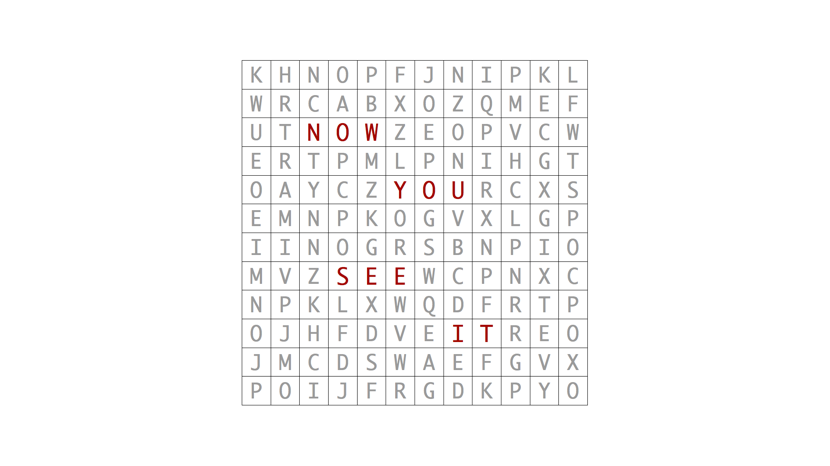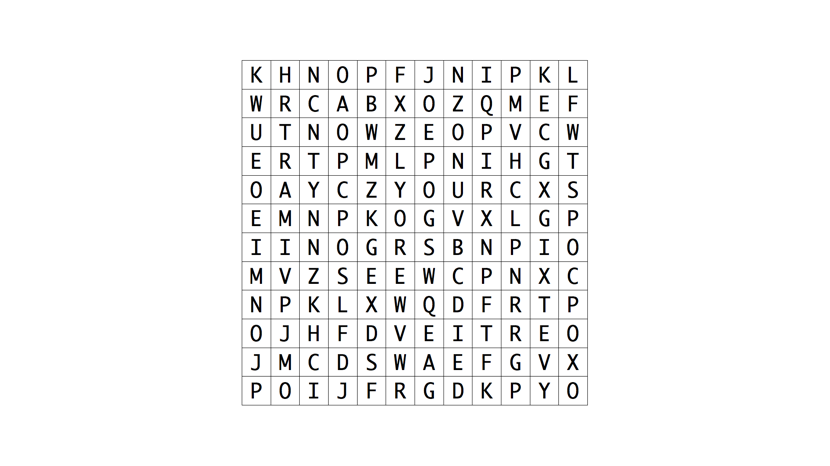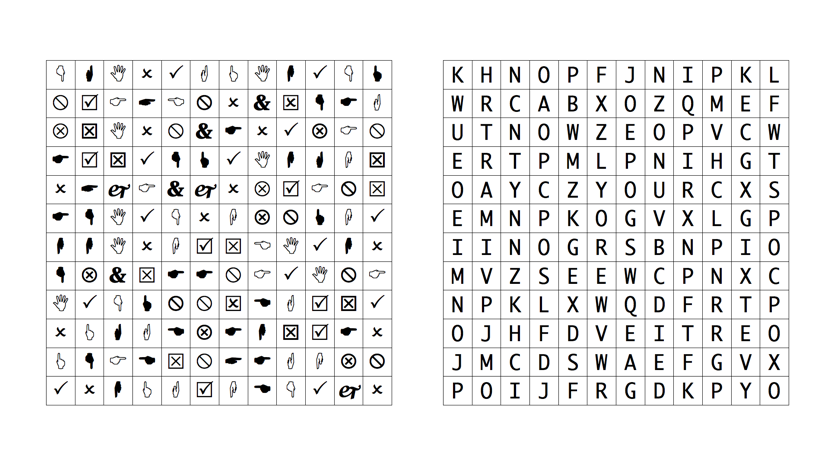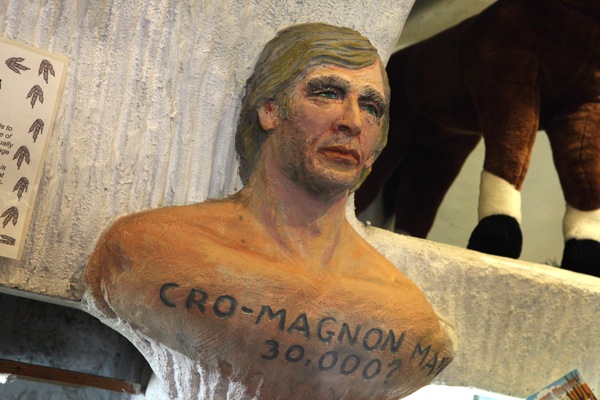
Last week I attended the IA Summit in Baltimore. It was my first IA Summit and I’m very glad I decided to go. I met so many intelligent, thoughtful, and passionate practitioners (and academics) of information architecture, and I found myself inspired and challenged to raise my game and do better work.
The following are some of my rough notes from the five days of the conference. While this is short on narrative, I hope there are enough nuggets of wisdom and links to explore that you’ll find something new to think about.
Themes
Some of the major concepts that kept cropping up for me:
- Information Ecosystems
- Information Ecologies
- We need better tools
- The new spirit of IA is, as Christian Crumlish put it: Third Wave IA – or Resmini-Hinton-Arango IA – the high level stuff; what is this, what does it do, what is going on in the user’s brain?
Quotes
- “We look at the present through a rear view mirror. We march backwards into the future.” – Marshall McLuhan
- Do what you do best, and link to the rest. -Jeff Jarvis
- “Man is a being in search of meaning” -Plato
- “Language is infrastructure” – Andrew Hinton
- “Un esprit nouveau souffle aujourd’hui” (There is a new spirit today) -Le Courbusier
- “Cyberspace is not a place you go to but rather a layer tightly integrated into the world around us.” – Andrea Resmini
- “IA is focused on the structural integrity of meaning” – Jorge Arango
- “Once there was a time and place for everything: today, things are increasingly smeared across multiple sites and moments in complex and often indeterminate ways.” W. J. Mitchell
- “Christina Wodtke makes me brave. She says ‘Here, put this in your mouth.'” -Abbe Covert
- “The difference between our websites and a ginormous fungus is the the fungus has maintained it’s integrity.” -Lisa Welchman
- “We live in Einsteinian physics, where things are both a particle and a wave.” -Lisa Welchman
- “There are usually political barriers to solving information problems on sites. They’re not IA problems.” – Lisa Welchman
- “I’m doing more IA and UX now as a product manager than I ever did when I was a UX designer” – Donna Lichaw
- “We may be confused, but we have a community of confusion” – Bryce Glass
- “Mathematicians have a saying: Problems worthy of attack prove their worth by fighting back.” -Karl Fast
- “Discovery is not a phase, It is an ongoing activity” -Kerry-Anne Gilowey
Wednesday, April 3, 2013
 “Un esprit nouveau souffle aujourd’hui” (A new spirit breathes [lives] today)
“Un esprit nouveau souffle aujourd’hui” (A new spirit breathes [lives] today)
Andrea Resmini introduced the day by putting the current information ecology in perspective for us. We have moved from a world where computing was done in a specific time and place to a world where computing is ever-present. “Cyberspace is not a place you go to but rather a layer tightly integrated into the world around us.”
For example, the average citizen in the EU spends 29.5 hours computing each week. The average citizen in the UK spends 39 hours computing each week.
The day was structured around groups of Ignite-style talks, with discussion and an exercise after each.
Talks for Part 1
David Fiorito: The Cultural Dimensions Of Information Architecture.
Culture is a learned and shared way of living; we are creating culture through IA
David Peter Simon: Complexity Mapping
We need to develop device-agnostic content.
We think a lot about how content will be presented (different forms like tablets, watches, google glasses) but we don’t think so much about how information will be presented on those new forms.
Simon Norris
“Man is a being in search of meaning” -Plato
Take a meaning-first approach to IA. Start with meaning
Matt Nish-Lapidus: Design For The Network: The Practice Of 21st Century Design And IA
The Romans built road networks to spread their cultural software. We build networks to spread a different type of cultural software.
Lev Manovich talks about the Cultural Interface: “…we are no longer interfacing to a computer but to culture encoded in digital form …” (Lev Manovich, The Language of New Media (2001))
We need a new design practice for the networked world, one that embraces humans, technology, craft, and interface.
Culture is moving faster and faster, moving up in the pace layer diagram
Recap and discussion from Part 1
Was Le Corbusier an IA? He was part of our history, one of the people whose shoulders we stand on, but his work must be understood in the context of his time. Calling him an IA wouldn’t be fair.
Does the IA create meaning by designing which resource is linked, or is there no way to create meaning because there are so many hyperlinks that users create their own meaning?
Christina Wodtke suggested developing a “Poetics of information architecture”
Talks for Part 2
(Note: I missed a speaker here, but I think it was Duane Degler)
Sally Burford: The Practitioners of Web IA Reviewed some research into The practice of IA at small and large organizations. IA needs to develop an identity, to take a strong stance
Jason Hobbes and Terrence Fenn: The IA of Meaning-Making
Defining the problem defines the solution; this is the problem/solution ecology
The IA design deliverable is resolving the problem/solution ecology
Recap and discussion from Part 2
What’s missing around IA in the academic community?
There is no written history of IA. (Some suggested a book by Earl Morrow (?), but others thought even that book was out of date).
It’s hard to have a career in academia when the term IA is not understood.
Activity: create a timeline of IA

Talks for Part 3
Dan Klyn: Dutch Uncles, Ducks, And Decorated Sheds
Meaning should be the center of our reframe of IA
Don’t bake meaning into structure; keep them separate
Jorge Arango: “Good Fit” In The Design Of Information Spaces
Jorge developed themes from Alexander’s Notes On The Synthesis Of Form.
The designer has to create a mental picture of the actual world. In really complex problems, formal representations of the mental model need to be created.
Andrew Hinton: A Model for Information Environments
IA has always been architecture of a dimension of a shared reality.
Keith Instone
We should continue working on reframing IA by thinking of it as a design problem.
Recap and discussion from Part 3
IA is about solving a problem.
Activity – List The Schools Of IA Thought

Thursday, April 4, 2013
Mike Atherton

Don’t reinvent, link!
- Define the boundaries of your domain
- Where objects touch existing models, use them instead of replicating them
- If canonical content pages already exist on your website for domain objects, link to them
- Don’t have more than one page covering the same topic
Shared model + shared language + shared understanding = consistent user experience
Structured content refers to information or content that has been broken down and classified using metadata.
- broken down into discrete concepts
- classified as real world things and relationships
- metadata: a structure readable by robots and people
Knowledge rejects rigid structure.
When we use the same language to describe the same things, we can build a web of knowledge across various services.
Structured content breaks down information into things and the relationships between them. A content model maps our subject domain, not our website structure or content inventory. Assertions distinguish between real-world things and the documents that refer to them.
Experts map the world, users mark points of interest.
Modeling begins with research, talking to experts and users to understand and articulate the subject. Ubiquitous language describes the granular terms that will be used by everyone on the project. Boundary objects show where your subject model can connect to neighboring models.
Content is hard.
Everything starts with good content. Content is not the stuff we pour into nicely designed containers. It’s not the stuff we chase up from the client at the last moment. It is not a placeholder. Content is the whole damn point.
“Do what you do best, and link to the rest.” -Jeff Jarvis
The link forces specialization and specialization demands quality
Other parts of your organization may be sitting on a goldmine of content or business data. Find it and exploit it.
The BBC’s principles:
- Never duplicate coverage within your own content (one page per thing)
- Do what you do best and link to the rest
- Create chunks based on the granularity of the model
- Be realistic about which parts of the model you can expose
Wrap Up
- Structured content breaks subjects into things and relationships
- It begins by talking to experts and users to understand their world
- The mental model becomes a content model for your whole team
- Your content needs to be atomized to align to the model
- Supporting content may be hiding in your business silos
- “One page per thing” makes content easier to manage and link to
- Make the best content available for your subject
- Focus each page around a single topic
- Structure your content with metadata
- Link as much as you possibly can
Friday, April 5, 2013

Scott Jenson
We often walk right past the next big thing.
Blog post: Bears, Bats, and Bees
We are in a “model crisis”
- Old model was buy, install, reuse (software)
- New model is discover, use, forget (experience)
We need a Google for your room. A personal search service for the things that are important to you.
Andrew Hinton

We live in both the digital and physical environments simultaneously.
We need to look at how we comprehend environments generally in order to understand how we understand digital environments.
Pace layers of information environments:
- Information technology
- Info organization and design
- Written / graphical language
- Spoken language
- Perception / cognition
Information in three modes
- Ecological – how animals perceive/relate to environment
- Semantic – people communicating with people
- Digital – digital systems transmitting to and receiving from other digital systems
Traditional cognitive theory assumes the brain is like a computer
Embodied cognition says that the brain uses the body and the environment to understand
Some key ideas from James J. Gibson’s theories
- we perceive elements in the environments as invariant (persistent) or variant (in flux)
- we perceive the environment in human-scale terms, not scientific abstractions
- we perceive the environment as “nested”, not in logical hierarchy
- Affordance: “the perceived functional properties of objects, places, and events in relation to an individual perceiver.”
Semantic information changes how we experience environment
“Language is a form of cognitive scaffolding.” – Andy Clark, Supersizing the Mind
The body and the ecological information can override the semantic information, as in a door that looks like a push door but has a sign that says pull.
Digital information enables pervasive semantic place-making
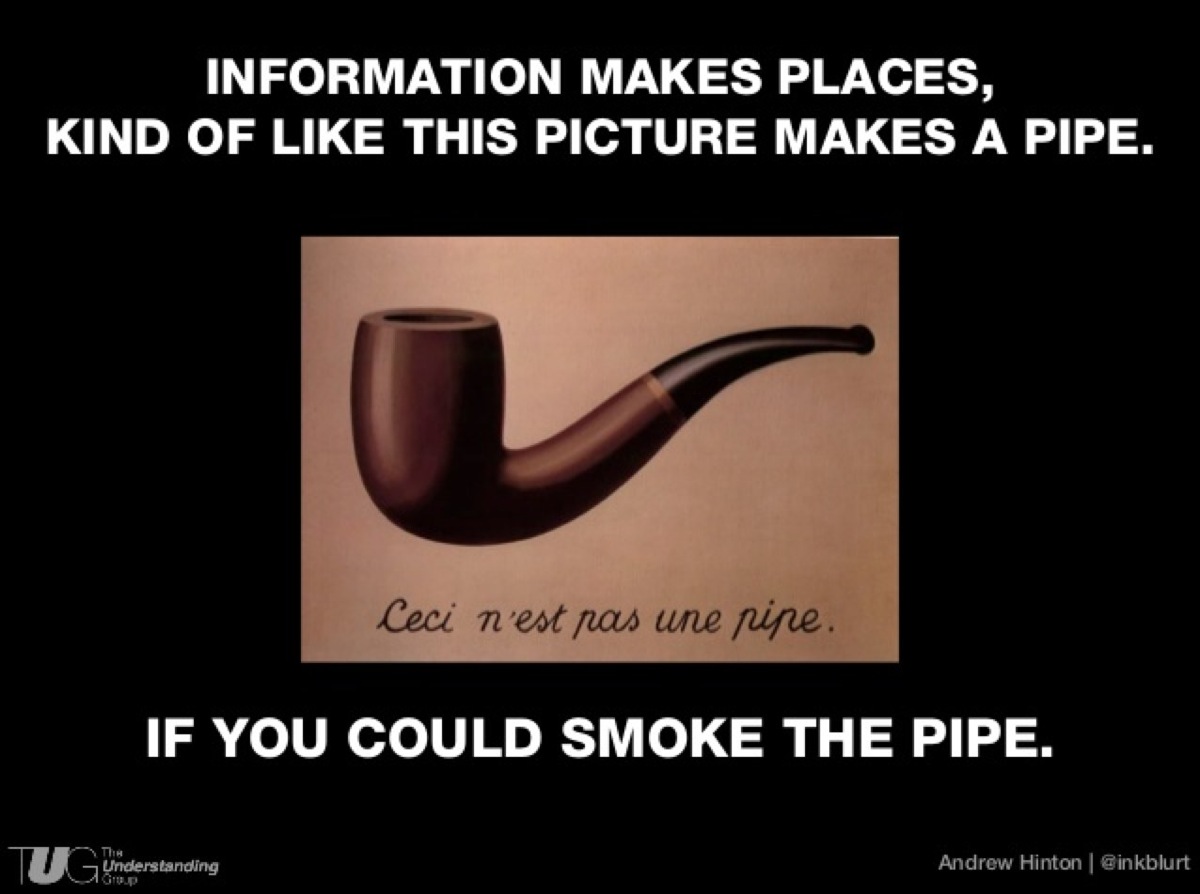
A design presentation for the American Society for Immortalization Science and Technology


Saturday, April 6, 2013

Jorge Arango

We need a better way to define what good IA is. And we need better ways to communicate about IA.
In architecture, simple forms can be recombined in different forms to create new forms.
Forms are made up of and can contain other forms
Nodes and links are our form and space
Nodes are our basic building blocks, and also the walls and buildings themselves
Nodes can contain and are made up of other nodes
Link: the relationship between nodes
There is a Form/Space Hierarchy (most complex at the top:)
- The built world
- Compounds
- Buildings
- Bounding forms
- Construction materials
Similarly, there is a Node/Link Hierarchy (most complex at the top:)
- The noosphere
- Information ecosystem
- Product / system
- Node clusters
- Individual nodes
We need to apply different approaches to different levels of the node/link hierarchy
IA is focused on the structural integrity of meaning.
Andy Fitzgerald
Taxonomy is rhetorical, place-making, and tied to embodiment
Mobile taxonomy is device independent
Mobile taxonomy is articulated
Mobile taxonomy is flexible
Taxonomies are goal-driven. They are rhetorical
Rhetoric – the means by which we inform, persuade, of motivate particular audiences in specific situations
Architecture is rhetoric for spaces
Taxonomy – a method of arrangement conceived to create a particular kind of understanding
Taxonomy is
- a crossroads of intent and embodiment
- a foundation for cross channel place-making
- a tool for building immersive, purpose-driven organization systems based on embodied experience
Andrea Resmini
This was a rich and thought-provoking talk, but difficult to summarize. The major themes were:
- Complexity
- Multiplicity
- Postdigital
- Architecture
There is a new spirit. It’s not towards order but towards disorder and multiplicity
A spirit of context, place and meaning
A spirit of sense-making, … and creating new places for humans to work and play
Peter Morville and Lisa Welchman

Big governance vs, local governance
There’s a lot of stuff happening at the local [organizational] level, but few people if anyone who are looking at the overall picture.
There are usually political barriers to solving information problems on sites. They’re not IA problems.
The governance of your web:
Your “stable environment” equals clear sponsorship, goals, and accountability.
Your “good genes” are goals are policy-driven, standards-based framework
These things will allow your web to grow and still be recognizable as your web. That’s all it is.
Enterprise web governance ensures the proper stewardship of an organizational web presence.
Stewardship, not ownership.
Kaarin Hoff
Abstraction – the intentional filtering of information to focus on core goals
We must carefully choose the model through which we hold conversations. Abstractions help stakeholders discover.
Adam Ungstad
Metadata enables consistency, context, and interoperability.
A cross channel experience requires sending information across channels.
“Messages have no meaning” – Andrea Resmini
… But every message has a structure
Standards:
Ontology is things and their relationships. When you have a concept of the space and you express it in a way that can be interchanged, you have an ontology.
Scott Thomas
Scott leads The Noun Project
Types of written languages:
Pictographic. Ideographic. Syllabic. Phonetic.
Sunday, April 7, 2013

Christian Crumlish, Bryce Glass, Donna Lichaw

The panelists discussed moving out of IA and UX and into product roles.
Donna – “I’m doing more IA and UX now as a product manager than I ever did when I was a UX designer”
Christian – my titles have changed, but I’ve been basically doing the same thing: defining the damn thing of the product, connecting people and ideas.
Donna – A product manager is like a producer: they conceive the vision and get people moving in the same direction
Donna – In New York, no one has any idea what a product manager is
Bryce – “We may be confused, but we have a community of confusion”
Christian- Third wave IA – or Resmini-Hinton-Arango IA – the high level stuff; what is this, what does it do, what is going on in the user’s brain
Christian – There’s a clearer career path for the people who are in charge of product. There’s more headroom.
Karl Fast

Xerox PARC identified a disease: biggerism
Solving the big problem seems more interesting, more exciting, more challenging
Small data problems: a large personal library, a desktop full of icons, a gmail inbox
Big data is about stuff that’s too big for anyone to understand
Small data is about:
- Eyes not size – it’s about the amount of stuff that has passed by my eyes
- Emotional – Has psychic weight, psychological debt
- Complex problem
- Messy
… And yet we focus on the app, not the coordination of the data
Organizations have big data problems
People have small data problems
Mathematicians have a saying: Problems worthy of attack prove their worth by fighting back.
We have small data problems worth working on. We are hitting the edges of search. Where’s the difference between searching and filtering? We have faceted search and faceted navigation. Which is it?
Problems are framed by how we think about the work we do. [I would say they’re also framed by the tools we have. -sm]
We need to make significant positive progress on a hard problem. We need to not be distracted by biggerism.
Kerry-Anne Gilowy
When we go in to a project with a personal methodology…
- We look for answers before we understand the questions.
- We make decisions too early
- We ignore things we can’t make fit
- We keep going through the motions
- We end up solving the wrong problem
We need ambiguity tolerance
Discovery is not a phase, It is an ongoing activity
Problem solving is squiggly
- Be honest
- Be confident (we need to solve the right problem)
- Communicate early and often
- Stay calm. It’s contagious
- Have a healthy fear of commitment
- Collaborate (with your client)
- Commit to the work, not the deliverables
Annie Drynan

Classic personas are the users we want to come to the site. We give them happy paths.
At the other end of the scale are anti-personas, people we want to discourage. (People who intend harm, people who are doing things with the service we don’t want, people who are too young)
Negative personas are not the primary audience, but may still come and be disappointed. Are we giving them what they need?
We’re not designing for everyone. But we need to acknowledge and handle pain points. In order to increase the number of satisfied customers.
Does it matter? Yes
- We reduce the chance of complaints
- We make social media a positive force
You can’t control who comes to the site, so you have to try just to not annoy them.
Design for success or failure.
Appendix
Books, Articles, and Movies
- Beyond the Brain, by Stanislav Grof
- Cognition in the Wild, by Edwin Hutchins
- The Ecological Approach to Visual Perception, by James J. Gibson
- The Ethnographic Interview, by James Spradley
- The Extended Mind, by Richard Menary
- Ghost in the Shell (movie)
- Performance Studies: An Introduction, by Richard Schechner
- Pervasive Information Architecture, by Andrea Resmini and Luca Rosati
- Strategy and Structure: Chapters in the History of the American Industrial Enterprise, by Alfred D. Chandler
- Supersizing the Mind, by Andy Clark
- System Esthetics, by Jack Burnham
Blog Posts and Artifacts


